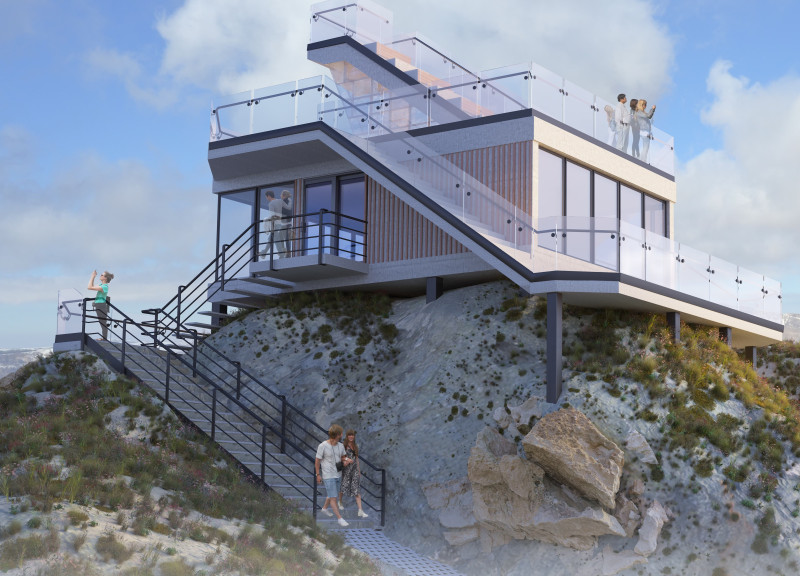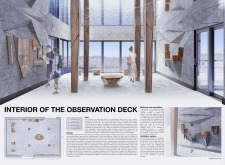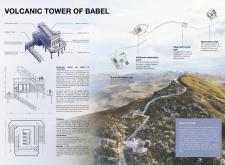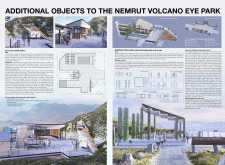5 key facts about this project
### Overview
The Volcanic Tower of Babel functions as an observation deck situated in a volcanic landscape near Nemrut Volcano, intended to enhance the visitor experience while connecting ancient history with contemporary architectural interpretation. The design integrates innovative materials and strategic zoning, reflecting themes of exploration and a commitment to sustainable tourism practices.
### Spatial Strategy and Visitor Journey
The architectural layout emphasizes a tiered design that guides visitors from an entrance area through various lookout points, culminating in the observation deck that offers expansive views of the volcanic terrain. This progression through the structure is intentional, creating a narrative that intertwines the historical significance of the Tower of Babel with the visitor experience, promoting a sense of exploration and discovery.
### Material Selection and Environmental Integration
The exterior employs concrete for durability, while glass elements facilitate unobstructed views and natural light, creating an open and inviting atmosphere. Wooden accents contrast with the concrete, enhancing warmth and connection to the natural environment. Inside, the use of exposed timber beams and textured concrete walls enriches the tactile experience, while a sophisticated ventilation system aligns with sustainable building practices, optimizing passive heating and cooling. Each material choice supports environmental harmony and reinforces the building's contextual relationship with its surroundings.
The design incorporates distinct functional areas including an exhibition zone that educates visitors about the geological significance of the locale, a recreation area for relaxation and social interaction, and an interactive zone that encourages hands-on experiences. By focusing on these aspects, the Volcanic Tower of Babel fosters a comprehensive understanding of its historic and geological context, while maximizing engagement with the landscape.























































